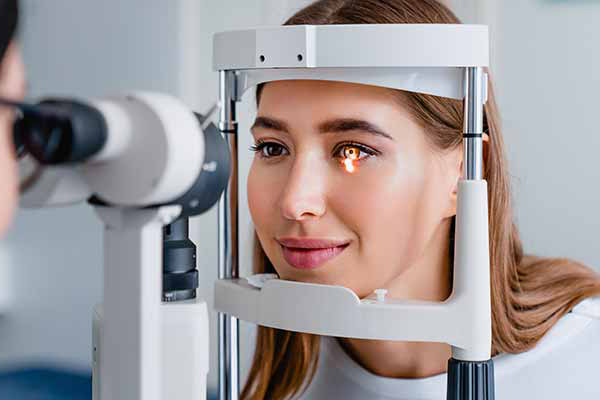Leading Cardiologist in Andalusia: Find Specialist Clinics Near You
Wiki Article
The Benefits And Drawbacks of Different Refractive Surgeries for Enhanced Eyecare

LASIK Surgical Procedure
LASIK surgical treatment is a frequently done refractive procedure that intends to fix vision issues such as nearsightedness, astigmatism, and farsightedness. Throughout the procedure, a thin flap is developed on the cornea, and a laser is used to improve the underlying cells, fixing the refractive mistake.One of the key benefits of LASIK surgical treatment is the quick improvement in vision experienced by numerous clients. It is vital for people thinking about LASIK surgical treatment to undergo a thorough examination by an eye care professional to identify if they are ideal prospects for the treatment.
PRK Treatment
The PRK treatment, also referred to as Photorefractive Keratectomy, is a sort of refractive surgical procedure that aims to deal with vision issues similar to LASIK surgical treatment. Unlike LASIK, which includes developing a flap in the cornea, PRK functions on the surface area layer of the cornea. Throughout the PRK procedure, the outer layer of the cornea, called the epithelium, is removed to allow reshaping of the underlying corneal tissue with an excimer laser. This reshaping helps to fix refractive errors such as farsightedness, nearsightedness, and astigmatism.One of the advantages of PRK over LASIK is that it removes the danger of flap-related complications given that no flap is produced during the surgical procedure. Despite the longer recuperation period, PRK can be an ideal choice for people seeking vision correction surgical treatment.
SMILE Surgery
A cutting-edge refractive surgical treatment strategy getting appeal in the field of ophthalmology is SMILE Surgical procedure. Small Cut Lenticule Extraction (SMILE) is a minimally invasive treatment that corrects vision by reshaping the cornea making use of a femtosecond laser. Unlike conventional LASIK surgery, SMILE Surgical procedure involves producing a tiny incision in the cornea to draw out a lenticule, which causes much less disruption to the corneal structure and possibly much faster recovery times.One of the key benefits of SMILE Surgery is its capability to deal with nearsightedness (nearsightedness) and astigmatism with high accuracy, leading to exceptional aesthetic outcomes for clients. The minimally invasive nature of the treatment additionally lowers the threat of difficulties such as dry eye syndrome, making it a beneficial choice for people looking for refractive surgical procedure.

LASEK Method
Having checked out the advantages and factors to consider of SMILE Surgical treatment, one more notable refractive surgical treatment method worth taking a look at is the LASEK Strategy. LASEK, which means Laser-Assisted Subepithelial Keratectomy, is a type of laser eye surgical treatment that intends to remedy refractive errors such as myopia (nearsightedness), hyperopia (farsightedness), and astigmatism.Unlike LASIK, LASEK does not entail creating a corneal flap. Rather, during a LASEK procedure, the specialist makes use of a watered down alcohol option to loosen up the thin external layer of the cornea, understood as the epithelium. This layer is after that carefully relocated aside to allow the laser to reshape the underlying corneal cells. When the cornea has been reshaped to the preferred degree, the epithelial layer is repositioned.
Among the main advantages of LASEK is that it can be appropriate for individuals with slim corneas who might not be great prospects for LASIK. Furthermore, LASEK generally causes very little post-operative pain and a quicker healing time contrasted to PRK. Nevertheless, the aesthetic recovery procedure with LASEK might be somewhat longer than with LASIK.
Implantable Contact Lenses
Implantable Call Lenses provide a lasting vision adjustment option for people seeking an option to traditional get in touch with lenses or glasses. These lenses, additionally called phakic intraocular lenses, are surgically placed right into the eye to correct refractive errors such as nearsightedness (nearsightedness), hyperopia (farsightedness), and astigmatism. eye doctors in andalusia. Unlike typical contact lenses that rest on the surface of the eye, implantable get in touch with lenses function within the eye itself, giving clear vision without the need for everyday upkeep or elimination
Among the key advantages of implantable get in touch with lenses is their permanence. When put, they can continue to be in the eye forever, offering constant and steady vision modification. In addition, these lenses cardiologist andalusia can be an excellent choice for individuals who are not great candidates for laser eye surgical treatment or who choose a relatively easy to fix vision adjustment treatment.
Nevertheless, implantable contact lenses do lug some risks, consisting of the capacity for cataracts or boosted eye stress. It is critical for people considering this choice to speak with an eye treatment professional to figure out if implantable get in touch with lenses are the ideal option for their certain requirements and eye health and wellness.
Conclusion
In final thought, each kind of refractive surgical treatment has its own benefits and disadvantages. LASIK surgical procedure is popular for its fast recovery time, while PRK treatment may be appropriate for clients with slim corneas.
Generally, SMILE Surgical procedure provides an encouraging option for individuals looking to boost their vision via refractive surgery.
Report this wiki page